Lauren Baccus Fetting, Lyming and Winding in the Bacchanal of Trinidad’s Carnival
Profile for the Month Celebrating International Women’s Day

“All of these places have some form of carnival and while each are pretty distinct, they all provide an incredible outlet for celebration, release, storytelling, connection. Coming back to Trinidad this year though was especially significant because for the first time, I was part of the design team for Lost Tribe”
“Carnival is about telling and retelling our histories but it is also a space for very current social commentary. It is a tool that parades as a pure fun, but that’s the illusion. It’s accessible and it’s participatory, and its art.”
Lauren, it looks like you had an amazing trip in Trinidad’s Carnival this year. How does the carnival in Trinidad and Tobago differ from St. Lucia’s? Give our readers, an overview of how you came to Carnival, with whom and where you stayed.
I grew up in Jamaica and moved to Trinidad when I was 10. After about a decade in New York, I moved to St. Croix, USVI where I now live. All of these places have some form of carnival and while each are pretty distinct, they all provide an incredible outlet for celebration, release, storytelling, connection… Coming back to Trinidad this year though was especially significant because, for the first time, I was part of the design team for Lost Tribe.
I had just come off of creating my first puppet for St. Croix Carnival, or Crucian Christmas Festival, which is smaller and much more of a spectator sport. That presentation, titled, “The Land Belongs to the Land”, was a large paper mache and cloth egret, and a direct response to these ideas we have about ownership of the earth. The process of creating the piece was especially significant for me as this year marks the 100th anniversary of the transfer of the Virgin Islands from Danish to American rule. I wanted to talk about the legacy of buying and selling an entire territory and its people but from a much larger perspective. Because St. Croix is a smaller affair, it’s much easier to participate and create freely. The piece did create conversation, but not around the original theme. Still, I felt absolutely grateful for the dialogue that came out of that.
“The Lost Tribe manages to balance the two elements, glamour and artistry, really beautifully.”
In contrast, The Lost Tribe is an organized collective. Your design voice has to reflect and blend with not just the other designers, but the aesthetic that they represent, a bridge between traditional mas and contemporary design. Being part of the team was 3 years in the making but it was perfect timing. The entire trip happened very much like that, a little haphazard, lots of last minute planning, but ultimately everything worked out!
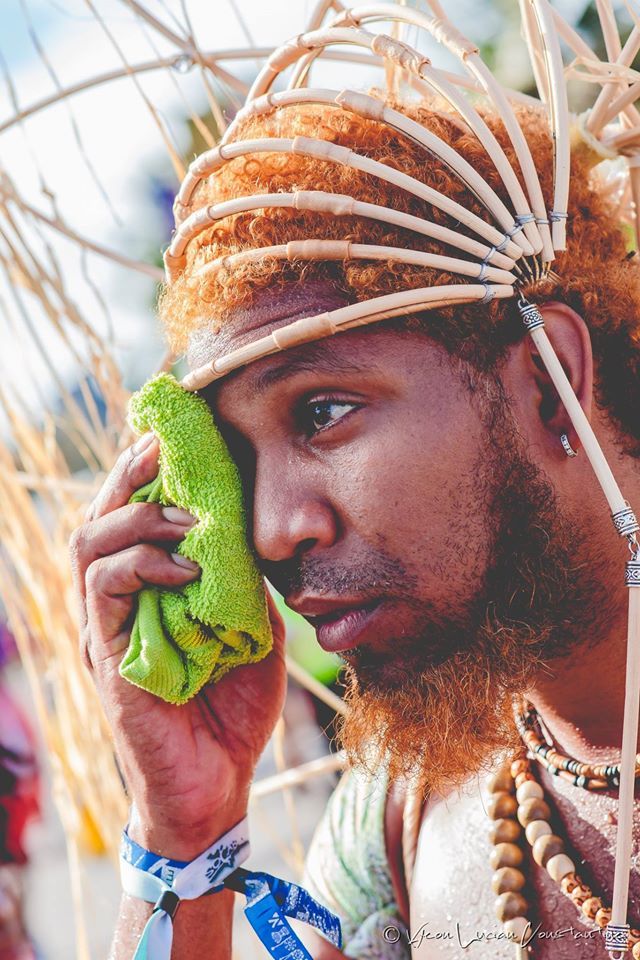
“My first memories of Trinidad were of carnival. The creatives that I have always been most drawn to are, among other things, mas makers and puppeteers.”
So you marched with under the “Lost Tribe” banner – how was that?
This was Lost Tribe’s second presentation and it is already considered a large band. Its success is such a testimony to an element of mas that many people felt was missing, or at least was quickly disappearing amongst the ornate “bead and feather” costumes. There might be divided camps on this but I’m actually a fan of those costumes. There’s no reason to believe they cannot coexist with, and even inform design that is more heavily influenced by storytelling and traditional masquerade. The Lost Tribe manages to balance the two elements, glamor and artistry, really beautifully. I have enormous respect for the creatives of Lost Tribe and Creative Director Valmiki Maharaj and Co-Creative Director Anya Ayoung Chee. I’ve been waiting for this kind of mas!
The design that ended up as “Arieto” had originally been submitted for Lost Tribe’s parent band, Tribe, by my design partner Jeri-Lee Alexander and myself. In retrospect, it absolutely belonged to the Lost Tribe, even though the band had yet to be created. There was some tweaking to the design, but again, that’s part of that process of collaboration.
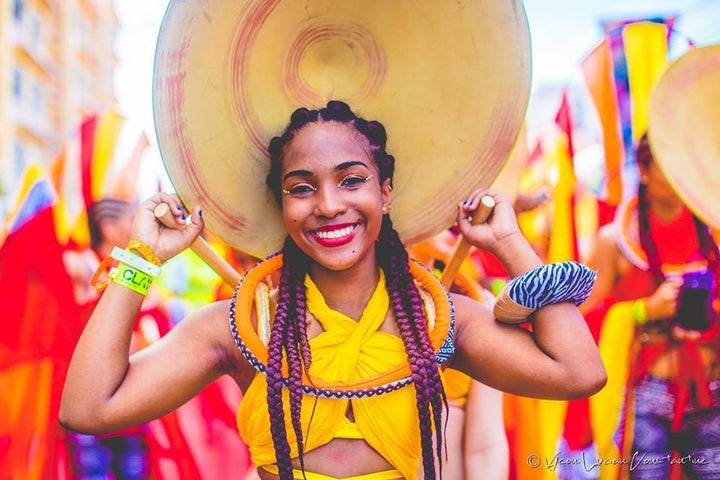
“Organizations like “Say Something” founded by activists Attillah Springer and Angelique V. Nixon are calling for gender-sensitivity training and improved data collection on the part of the government.”
As an artist, were you inspired by Carnival? Will you be creating work from your experience?
Carnival IS art!
My first memories of Trinidad were of carnival. The creatives that I have always been most drawn to are, among other things, mas makers and puppeteers. My Caribbean history is told through carnival so how can it NOT be a formative part of who I am and the work I produce? Carnival is about telling and retelling our histories but it is also a space for very current social commentary. It is a tool that parades as a pure fun, but that’s the illusion. It’s accessible and it’s participatory, and it’s art.
My dream has always been to design for carnival and I’m lucky enough to have access to two. They present very different opportunities to create and for as long as I can, I’ll continue to do so.
“Carnival is about telling and retelling our histories but it is also a space for very current social commentary.”
My dream has always been to design for carnival I’m lucky enough to have access to two. The present very different opportunities to create and for as long as I can, I’ll continue to do so.

Who was Carnival King and Queen this year?
I’m actually not sure who won but I do have a family member who was the queen with the band K2K and came fifth!
I heard one of the soca melodies making the rounds this year was by 76-year-old music legend Calypso Rose and titled matter-of-factly “Leave Me Alone.” Was there a road march to that tune? What were the big socas?
Leave Me Alone is not just a good song, it is a direct response to this idea that a woman participating in carnival is essentially inviting harassment. The song is a strongly feminist stand and a celebration of this time where women can possess their own bodies and their own sexuality whether in song or dance or just an opportunity to play dress up. Women have been singing empowering songs for years, but right now, there’s a groundswell of activism happening in Trinidad around street harassment, victim blaming, body-shaming, and violence towards women. There’s a certain brand of persistent misogyny in the Caribbean that has created the necessity for songs like this and the work of activists and artists around these issues.
Organizations like “Say Something” founded by activists Attillah Springer and Angelique V. Nixon are calling for gender-sensitivity training and improved data collection on the part of the government. Other artists are collaborating through organizations like Together WI, creating really effective campaigns around “Leave She Alone. All of this further increases the visibility of these issues and those willing to speak on it. That this song could capture this movement is the kind of thing that exemplifies the power of carnival. Were there other big socas, absolutely, but this is the one that I hope we’ll keep talking about.
“Most of my favorite things happen in those darkened hours between 3am and 7am. As one friend put it, that’s when the conjuring happens. Carnival is a conjuring in truth, so it makes sense that those hours seem especially magical.”
Tell me most amazing experiences you had at carnival this year?
First, of course, was seeing a couple hundred people in a design that I had worked on cross the Savannah stage. That was the pinnacle! It is something that has been a dream for so long and it was finally realized. There’s not a lot more I can say about it! As a participant, though, I’ve got to say that The Lost Tribe experience on the whole was incredibly easy and professional. For all my lack of planning, it definitely was the smoothest part of the trip.
A close second would be Jouvert, the early morning baptism by paint! The“opening day” of carnival and the official first tramp through town. I’m mixing up my carnival language here as “tramp” is more a Crucian word for walking with a band. We played with 3 Canal and were accompanied by the Laventille Rhythm Section. Unlike the blaring trucks with canned music and DJs, this was earthy and raw; iron and drums for the darkness.
Most of my favorite things happen in those darkened hours between 3am and 7am. As one friend put it, that’s when the conjuring happens. Carnival is a conjuring in truth, so it makes sense that those hours would seem especially magical. The reenactment of the Canboulay riots also happen at that time and are another favorite memory from the time. Carnival, post emancipation, became an important opportunity for social commentary and even open defiance. Traditions like the stick fighting, canboulay ("cannes brulees" the burning of cane), chantwells and kaiso evolved throughout this transition. For the British authorities, this felt very much like a threat to public order and those forces clashed with the revelers in a series of riots. These are the events that are recreated every year as a reminder of how hard won this celebration actually is. Definitely one of my top 3 experiences.

“Carnival, post emancipation, became an important opportunity for social commentary and even open defiance. Traditions like the stick fighting, canboulay ("cannes brulees" the burning of cane), chantwells and kaiso evolved throughout this transition.”
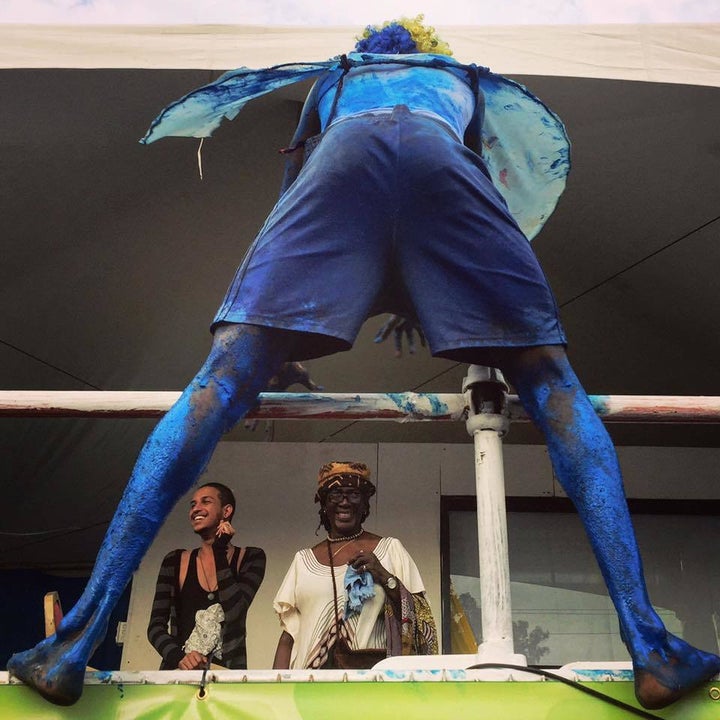
A blue devil jumps into the Canboulay crowd for payment. Only when he receives his money does he move on to his next target
Carnival, post emancipation, became an important opportunity for social commentary and even open defiance. Traditions like the stick fighting, canboulay ("cannes brulees" the burning of cane), chantwells and kaiso evolved throughout this transition. For the British authorities, this felt very much like a threat to public order and those forces clashed with the revellers in a series of riots. These are the events that are recreated every year as a reminder of how hard won this celebration actually is. Definitely one of my top three experiences.
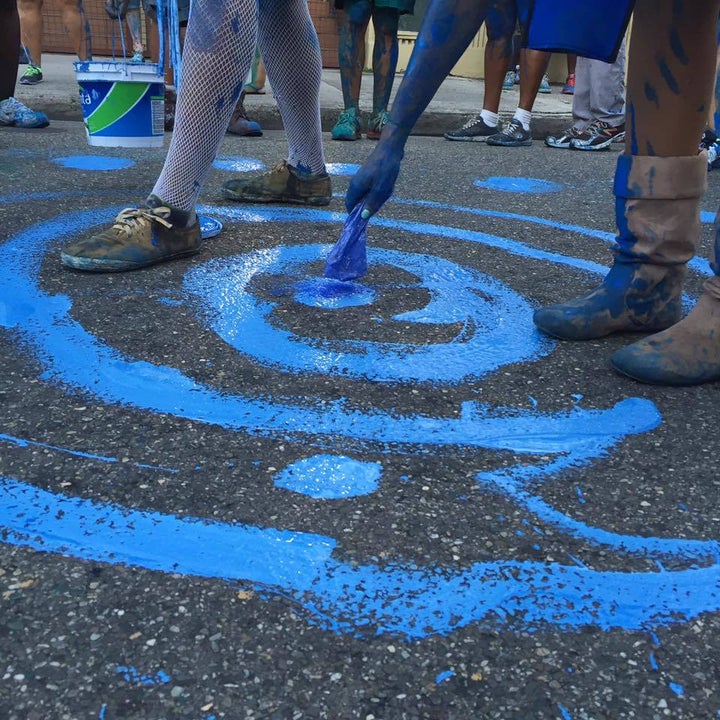
Paint de town BLUE! Jouvert morning with 3 Canal. You can’t play mas, if you fraid powder...or paint.
A bit of interesting history on Carnival where, Calypso music was developed in Trinidad in the 17th century from the West African Kaiso and canboulay music brought by African slaves imported to that Caribbean island to work on sugar plantations. As calypso developed, the role of the griot became known as a chantuelle and eventually, calypsonian. As a Caribbean, is there a sense of tradition and history the TnT Carnival experience?
Absolutely but ultimately, that belongs to the participant. In truth, there’s history and tradition in all things. The key is looking for those signs; can you even see the past in the present? Musicians and mas makers are still pulling from traditional influences, whether we recognize it or not. We are participating WITHIN history, whether we acknowledge it or not. Carnival in 2017 may be an evolution, but exists just as much within the historical context as 100 years prior. It’s still a part of the story.
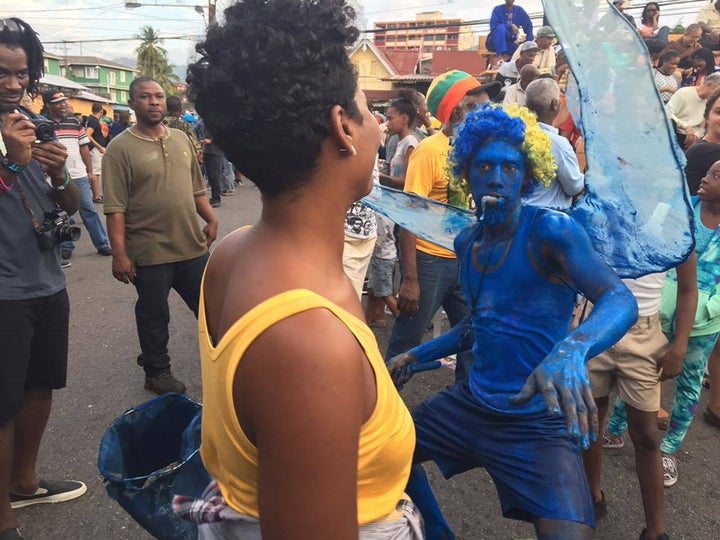
“The process for me is a clearing and a celebration but also refocusing. It’s a process that happens both communally and as an intensely personal experience.”
Is there a spiritual dimension to Carnival in Trinidad and Tobago?
The kind of spirituality that resonates with me personally are those teachings which embrace our duality, our light and our darkness. The celebration of carnival is also about that which is light and that which is dark, together. The history of carnival is lightness within darkness and vice versa. There’s no way to go through carnival, experience the music, bear witness to all of that color and glory and not feel akin to something spiritual.
The process for me is a clearing and a celebration but also refocusing. It’s a process that happens both communally and as an intensely personal experience. Yes, there are moments of complete abandon, but those are temporary states. One can chase that euphoric freedom, just as as one can chase enlightenment but that removes you from the present, a lesson which carnival teaches.. Even the greatest case of tabanca, that sadness that inevitably accompanies the end of carnival, is a lesson.
Everything is temporary!
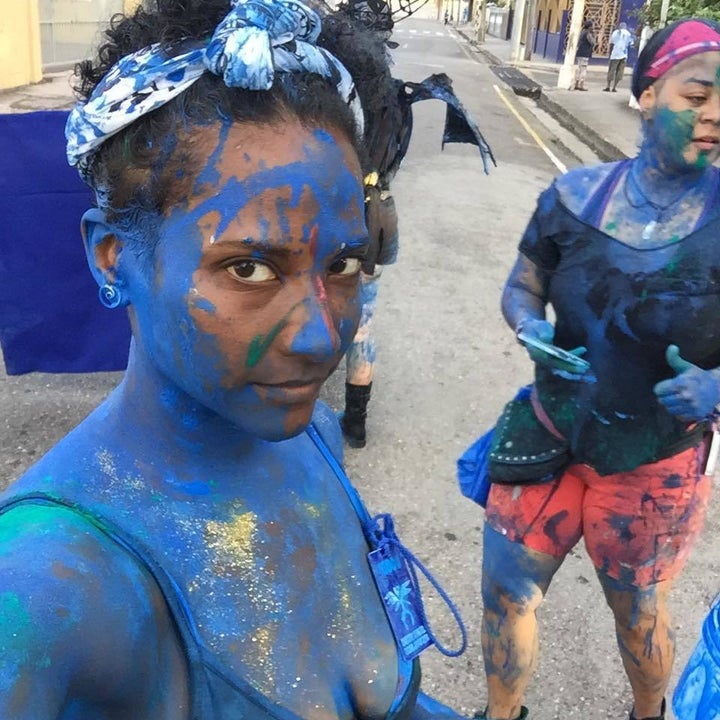
Artist and educator, Lauren Baccus, has been involved in various programming initiatives for seniors, teens and young children for many years. The bulk of her experience has been in New York City where she has worked with organizations from the New York Botanical Garden to Groundswell Murals, a non profit devoted to creating public art. She now lives and works in St. Croix, USVI As an artist, she has been painting murals for over 15 years and brings a commitment to accessible art to every project
